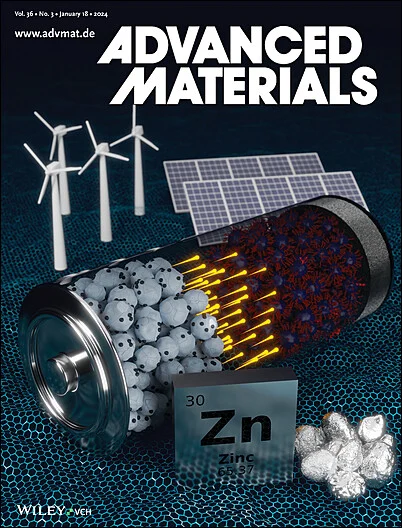Oxygen Spillover: Revolutionizing Catalytic Performance and Disrupting Mechanistic Paradigms in Sustainable Chemistry
IF 26.8
1区 材料科学
Q1 CHEMISTRY, MULTIDISCIPLINARY
引用次数: 0
Abstract
Oxygen spillover, a dynamic interfacial phenomenon in catalysis, enables the migration of active oxygen species (*O, *OH) across catalyst interfaces, overcoming the limitations of traditional static active sites and establishing a new paradigm for optimizing catalytic performance in sustainable chemistry. This review systematically examines mechanistic advances in oxygen spillover and its applications in energy‐related catalytic reactions (e.g., oxygen evolution reactions, oxygen reduction reactions, hydrogen evolution reactions, hydrogen oxidation reactions, organics oxidation reactions), highlighting its core advantage in decoupling intermediate adsorption/desorption energetics and reconstructing reaction kinetic pathways. By integrating in situ characterization and theoretical simulations, the regulatory mechanisms of electronic structure gradients, defect engineering, and heterojunction design on spillover kinetics are elucidated, along with rational design strategies for atomically precise catalysts. The oxygen spillover mechanism not only addresses the trilemma of catalytic efficiency‐selectivity‐stability but also provides unified design principles for cross‐disciplinary catalytic systems, driving the paradigm shift in catalysis science from phenomenological description to predictive design.氧溢出:革新催化性能和破坏可持续化学的机制范式
氧溢出是催化中的一种动态界面现象,它使活性氧(*O, *OH)在催化剂界面上迁移,克服了传统静态活性位点的局限性,为可持续化学中优化催化性能建立了新的范式。本文系统地综述了氧溢出的机理研究进展及其在能量相关催化反应(如析氧反应、氧还原反应、析氢反应、氢氧化反应、有机物氧化反应)中的应用,强调了其在解耦中间体吸附/解吸能量学和重构反应动力学途径方面的核心优势。通过原位表征和理论模拟相结合,阐明了电子结构梯度、缺陷工程和异质结设计对溢出动力学的调节机制,以及原子精密催化剂的合理设计策略。氧溢出机制不仅解决了催化效率-选择性-稳定性的三难问题,而且还为跨学科催化系统提供了统一的设计原则,推动了催化科学从现象学描述到预测设计的范式转变。
本文章由计算机程序翻译,如有差异,请以英文原文为准。
求助全文
约1分钟内获得全文
求助全文
来源期刊

Advanced Materials
工程技术-材料科学:综合
CiteScore
43.00
自引率
4.10%
发文量
2182
审稿时长
2 months
期刊介绍:
Advanced Materials, one of the world's most prestigious journals and the foundation of the Advanced portfolio, is the home of choice for best-in-class materials science for more than 30 years. Following this fast-growing and interdisciplinary field, we are considering and publishing the most important discoveries on any and all materials from materials scientists, chemists, physicists, engineers as well as health and life scientists and bringing you the latest results and trends in modern materials-related research every week.
 求助内容:
求助内容: 应助结果提醒方式:
应助结果提醒方式:


